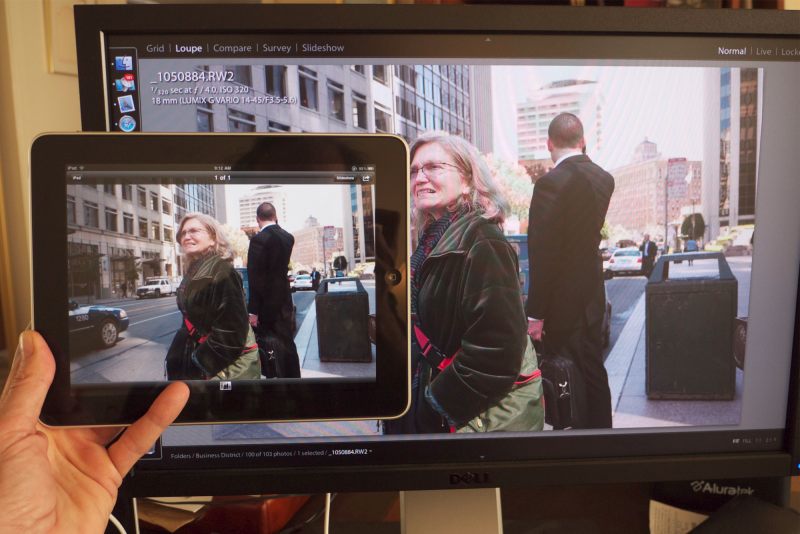Not half bad, as we used to say in school.
One of the iPad’s biggest advantages for photographers is it’s IPS (In Plane Switching) display whose singular advantage over TN (Twisted Nematic) LCD displays is that it suffers far less fall off viewed from acute angles.
A picture being worth a lot more than words, I imported a snap from a Panasonic G1 RAW file into iPhoto on the iPad using iTunes (boy, does that ever sound dumb, or what?), the only method available until the iPad’s SDHC card reader debuts later this month.
In the comparison pictures below you are looking at JPG renderings of the RAW file on both monitors, the large one being one of the two Dell 2209WA IPS displays on my desk.

Face on, the iPad’s image is a little warmer.

Off axis, reflections make comparisons tricky.
The Dell monitor is profiled using the EyeOne colorimeter. At present there is no way to profile the iPad’s screen but it’s close enough to be useful for preview and culling. Off axis, reflections on the iPad make comparisons difficult, (the Dell is, of course, matte), but the drop off in illumination intensity is far less than the picture suggests.
Some aver that off axis viewing is not something you do with portable devices. That’s largely true for the miniscule screens in devices like the iPhone but the iPad is quite capable of supporting multiple users – some games already provide that functionality – and obviously not everyone can have the screen dead front and central.
So the IPS technology in the iPad’s display is welcome and yet another technological step forward by the design geniuses at 1 Infinite Loop, Cupertino, CA.